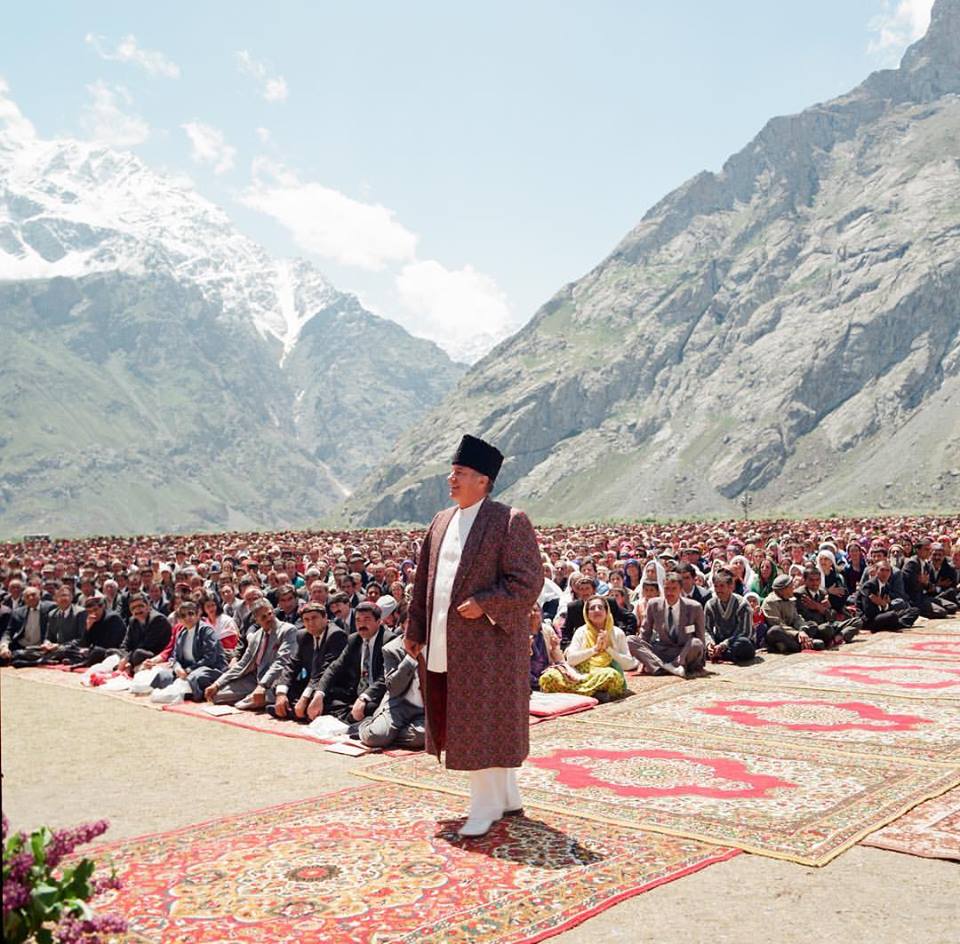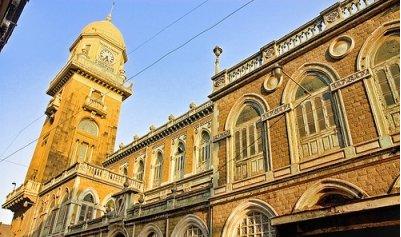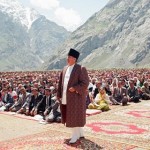Philanthropy has always flowered in Bombay, and the Ismailis—there are 15 million of them globally – owing allegiance to His Excellency Aga Khan IV, Prince Karim al-Husayni, practise it diligently, giving unobtrusively of their time and talent as and when sought by their leader. What is not widely known is that it was in 19th-century Bombay that the Aga Khans emerged as public figures and leaders of a community, dispersed across West and Central Asia, the subcontinent and East Africa.

This is the diamond jubilee year of His Excellency Aga Khan IV – anointed the 49th Imam of the Ismailis by his grandfather Sir Sultan Mahomed Shah Aga Khan III—who, on July 11, launched numerous non-denominational development projects[1], all with a primary focus on poverty alleviation, to mark the occasion. This is work that has already won him much appreciation.
These projects will, as always, combine astutely a business model–the Prince is an alumnus of Harvard University – with philanthropy,[2] directed both at their own people and the communities in whose midst they live. This approach has worked particularly well both in multicultural, pluralistic societies, like India and Canada, but also in Pakistan and Afghanistan, where the Ismailis are regarded a peace loving community, integrating seamlessly into society, while also giving back to it.
The edifice that exists today sprang from certain foundational events in 19th-century Bombay, which effectively legalised the hereditary temporal and spiritual power of the Aga Khan. The first Ismaili Rule Book[3] came about in 1905. Community institutions were established. This period also saw the beginning of an administrative structure that is today known as the Aga Khan Development Network (AKDN). This is an umbrella organisation for the Aga Khan’s non-profit work, which is funded by businesses, such as hotels and airlines that it also runs. This is the largest private development organisation in the world, employing 80,000 people, and disbursing $925 million annually.[4]
Aga Khan I comes to Bombay
According to historians[5], Hasan ‘Ali Shah, the 46th Imam and the first Aga Khan (an honorific bestowed on him by the Persian emperor, Fath Ali Shah), who settled in Bombay city in 1848, was the first Ismaili Imam to set foot in the Indian subcontinent. His arrival marked the beginning of the modern period in the community’s history. Prior to the 1800s, the Ismaili Shia Imams were based in Persia[6] and had limited contact with the Ismaili communities that were scattered across Central Asia and Afghanistan – where they were concentrated along the Silk Road – the Middle East, and South Asia. With the Imamat shifting from the province of Kirman (Iran)[7] to Bombay, the Ismaili Imam came into full public view, his presence having an invigorating effect on local Khoja Ismailis and many distant communities from Central Asia, who sent missions to the city to meet him.[8]
According to historian Zulfikar Hirji[9], many of the Ismaili communities on the Indian subcontinent (mostly in Sindh, Kutch and Saurashtra) adopted Ismailism sometime between the 14th and 15th centuries through the efforts of a succession of Ismaili pirs (missionary-saints) who had travelled here. “Upon their conversion the appellation Khoja was bestowed on some converts, the term being a Gujarati transposition of the Persian term Khwaja, meaning ‘lord and master’. Until the 19th century, these convert communities practised their faith in a dissimulated manner. Hence their Ismailism (religious beliefs and practices) displayed a complex interface with other traditions,” he writes.
Gathering a dispersed flock on the subcontinent and reforming their social institutions and religious practices was not easy. The authority of the Ismaili Imam was challenged in three cases that were adjudicated by the Bombay High Court. The first case of 1847[10] concerned female rights of inheritance of property, and whether, in the case of the Ismailis, it was governed by customary practices or the Sharia (Mohammedan law). In the Great Khoja Case (1851), a reform group (Barbhais or 12 brethrens) challenged the authority of the Aga Khan. But it was in the Aga Khan Case (1866) that the Ismaili Imam’s authority over British Indian Ismailis was legally delineated—and resulted in a schism within the community, with a breakaway faction being formed. This began a period of consolidation.
In Bombay, the oldest and chief jamaatkhana (congregational hall) of the Ismailis is Darkhana[11] on Samuel Street, in the Dongri area, where most of the community originally settled. This is a grand structure, complete with a stately clock tower. It was during Sir Sultan Mahomed Shah’s leadership (1885-1957) that his travels through the subcontinent resulted in many jamaatkhanas being set up. The first Aga Khan School also opened in 1905 in Mundra (Kutch). [12]

What is noteworthy during this period is his outreach to communities settled in East Africa, largely Kutchi-speaking Khoja Ismaili families, whose early pioneers had immigrated in the early 1820s much before Aga Khan I settled in Bombay.
The community’s first rule book, titled “The Rule Book of the Khoja Shia Imami Ismaili Council: Part 1&2, by Hussein Chapkhano” was instated for the local community by Aga Khan III in 1905, in Zanzibar.[13] It was here too that the first Supreme Council to regulate community life was set up.[14] Both the rule book and council governance are features of Ismaili community organisations worldwide. It was in Kisumu (Kenya) though, where the first jamaatkhana in Africa was inaugurated the same year. Well known Khoja merchant, Seth Allidina Visram, who made his fortune, building shops at every major station along the 580-mile long Uganda Railway Line, funded it.
Imamat’s shift from Bombay
After almost a century of the Imamat being headquartered in Bombay, Sir Sultan Mahomed Shah Aga Khan III took up residence in Switzerland, a neutral country, during the Second World War (1939-45). It was also a period when political turbulence due to the Indian nationalist movement and the inevitability of Partition, loomed over India. The seat of the Ismaili Imamat has been located in different parts of the world during its 1400-year-old existence.[15] While its history in Bombay marked the beginning of its modernisation, these Geneva years, largely under the stewardship of the present Aga Khan IV, were marked by global outreach and major growth in its development work.
The Imamat has now indicated that the headquarters may shift from Geneva to Portugal: the Portuguese government granted it special status in 2015 to operate globally from its territory.[16]
The Aga Khan and his followers have worked selflessly across borders and communities – and his diamond jubilee celebrations will have reverberations across them.
Sifra Lentin is the Bombay History Fellow at Gateway House.
This article was exclusively written for Gateway House: Indian Council on Global Relations. You can read more exclusive content here.
For interview requests with the author, or for permission to republish, please contact outreach@gatewayhouse.in.
© Copyright 2017 Gateway House: Indian Council on Global Relations. All rights reserved. Any unauthorized copying or reproduction is strictly prohibited.
References
[1] According to an Aga Khan Development Network (AKDN) press release, Diamond Jubilee priorities include the promotion of early childhood and primary education, strengthening institutions, and invigorating civil society.
Aga Khan Development Network, <www.akdn.org/press-release/update-aga-khans-diamond-jubilee-marks-60-years-of-commitments-faith-pluralism-and>, (Accessed on 13 July 2017)
[2] The Aga Khan does not consider his work as philanthropy but as his spiritual mandate. In the understanding of Imamat (office of Imam), the Imam (in this context the Aga Khan) is responsible for the improvement of the quality of life of his followers and also those among who they live and are in need.
[3] The historic meaning of Rule Book (Constitution) is that it outlines the spiritual relationship between the Imam and his followers, which is different from an Ismaili’s secular loyalty to the country in which he lives.
Today, the Global Constitution (rule book) additionally regulates the relationship between various community institutions globally inter se, and their relationship with the Aga Khan Development Network (the umbrella organization). This Constitution operates under the law of each country and also outlines the relationship of AKDN with various government institutions.
[4] Aga Khan Development Network, Update—Aga Khan’s Diamond Jubilee marks 60 years of a commitment to faith, pluralism and improved quality of life (Geneva, AKDN, 2017)
www.akdn.org/press-release/update-aga-khans-diamond-jubilee-marks-60-years-of-commitment-faith-pluralism-and (Accessed on July 12, 2017)
[5] Daftary, Farhad, Ed., A Modern History of the Ismailis : continuity and change in a Muslim community(London, I.B. Tauris Publishers in association with The Institute of Ismaili Studies, 2011), p. 7.
[6] Prior to 1935, Iran was known as Persia. At the time Aga Khan I immigrated to Bombay, it was Iran.
[7] The Institute of Ismaili Studies, The Ismaili Imamat History (UK, IIS, 6 July 2015)
<iis.ac.uk/about-us/his-highness-aga-khan/ismaili-imamat-history> (Accessed on 13 July 2017)
[8] Ibid
[9] Hirji, Zulfikar, “The Socio-Legal Formation of the Nizari Ismailis of East Africa, 1800–1950”, Chapter 6 (Part 2), from Daftary, Farhad, Ed., A Modern History of the Ismailis : continuity and change in a Muslim community(London, I.B. Tauris Publishers in association with The Institute of Ismaili Studies, 2011), p. 130.
[10] The 1847 case was actually two cases concerning whether customary practices or the Sharia law was applicable for succession (inheritance) in the case of the Ismailis. The Aga Khan was not party to the suits but was represented.
[11] The present building was inaugurated by H.E. Aga Khan III on January 22, 1915. It was built by Megji Mulji Mukhi. However, it appears that there existed an older jamaatkhana on this site. Heritage Society: Ismaili. Net, 74. Meghji Mulji, Mukhi <htpps://ismaili.net/heritage/node/20736> (Accessed on 11 July 2017.)
[12] The Aga Khan School, Mundra < www.agakhanschools.org/India/AKSM/Index > (Accessed on July 11, 2017)
[13] Hirji, Zulfikar, “The Socio-Legal Formation of the Nizari Ismailis of East Africa, 1800–1950”, Chapter 6 (Part 2), from Daftary, Farhad, Ed., A Modern History of the Ismailis : continuity and change in a Muslim community(London, I.B. Tauris Publishers in association with The Institute of Ismaili Studies 2011), p.146.
[14] Today, the Ismailis worldwide have national councils for each country, and depending on the size of the community,the number of administrative layers are determined. In India, the National Council has three administrative layers and covers the regions of Western India, Southern India, North Eastern Gujarat, Northern Saurashtra, Southern Saurashtra, and Central & Eastern India.
[15] The Ismaili, Imamat day Mubarak https://the.ismaili/imamat-day-mubarak-1 (Accessed on July 13, 2017)
[16] Aga Khan Development Network, Historic agreement establishes Global Seat of Ismaili Imamat in Portugal <www.akdn.org/event/historic-agreement-establishes-global-seat-ismaili-imamat-portugal> (Accessed on 12 July 2017)


